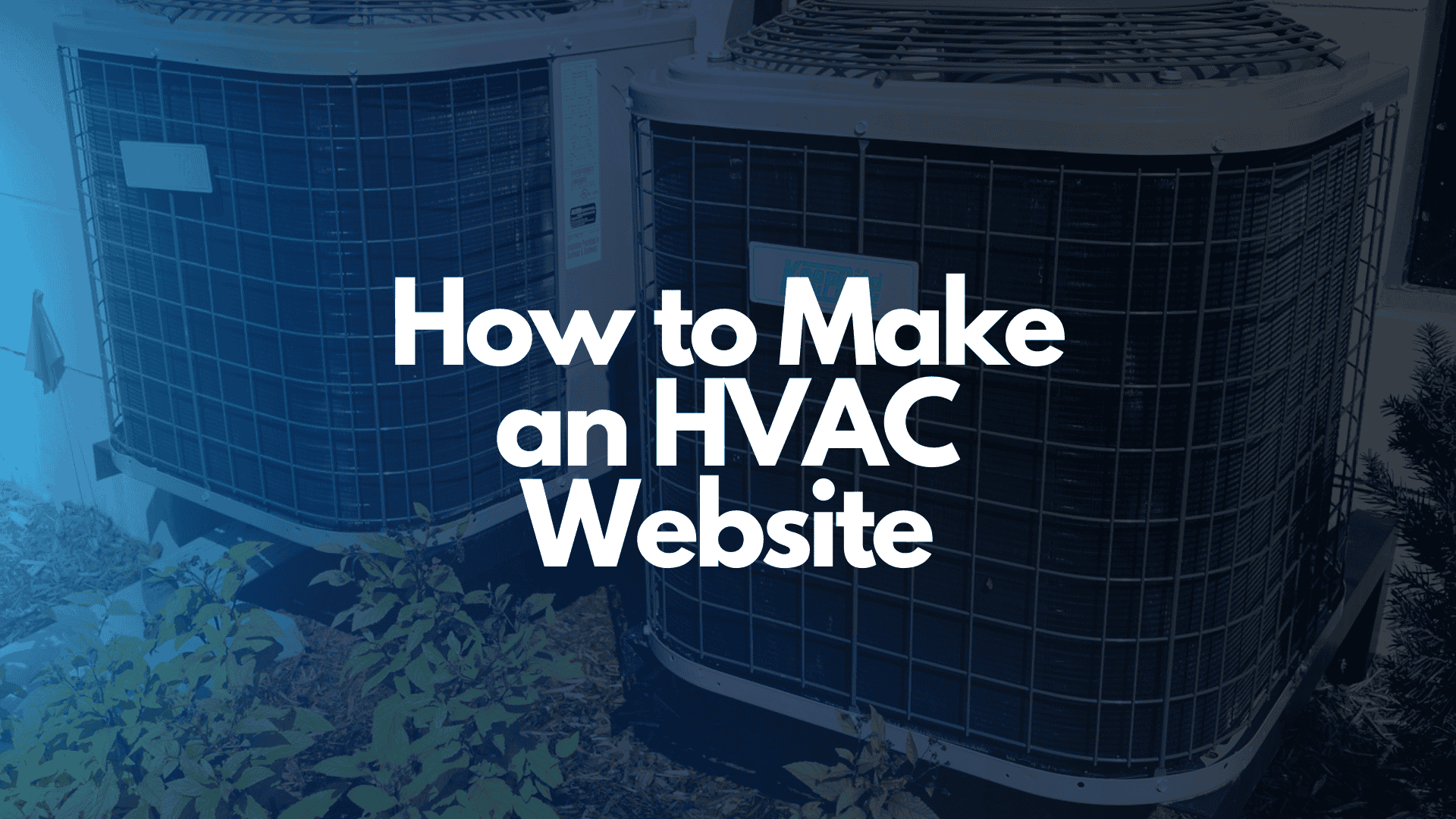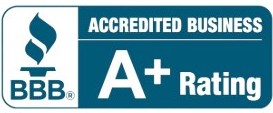
How to Make an HVAC Website
How to Make an HVAC Website: The Complete Guide for 2024
In today’s digital-first world, having a professional and well-designed website is crucial for the success of your HVAC business. A strong online presence can help you reach more potential customers, build credibility, and drive business growth. But how do you create an HVAC website that not only looks great but also attracts visitors and converts them into paying customers?
In this guide, we’ll walk you through everything you need to know about how to make an HVAC website, covering the basics of website design, content creation, SEO, and best practices for driving leads. Whether you’re starting from scratch or revamping an existing site, this comprehensive guide will help you create an HVAC website that works for you.
Why Your HVAC Business Needs a Website
Before diving into the technical aspects of website creation, let’s quickly cover why an HVAC website is so important:
- Increased Visibility: Most people turn to search engines like Google when they need HVAC services. Without a website, potential customers may not find you.
- Builds Credibility: A professional website establishes trust and shows that you are a legitimate business.
- Generates Leads: A well-optimized website can drive inquiries and generate leads for your business through contact forms, phone calls, and other call-to-action features.
- Showcases Services: Your website allows you to present your full range of HVAC services, pricing, and special offers.
- Online Marketing Hub: It’s the central point for all your online marketing efforts, including SEO, paid ads, and social media campaigns.
Step-by-Step Guide to Creating an HVAC Website
1. Choose a Domain Name and Web Hosting
The first step in creating your HVAC website is securing a domain name and selecting web hosting. Your domain name is your website’s address (e.g., www.YourHVACBusiness.com), while hosting is the service that allows your website to be accessible on the internet.
Tips for Choosing a Domain Name:
- Keep it simple and memorable: Use your business name or something closely related to your services, like “cityhvac.com.”
- Include relevant keywords: If possible, include “HVAC” or “heating and cooling” in your domain to improve search visibility.
- Avoid numbers and hyphens: These can confuse users and make your domain harder to remember.
Recommended Web Hosting Providers:
- Bluehost: Affordable and reliable, with great customer support.
- SiteGround: Known for fast loading times and excellent security.
- HostGator: User-friendly, with 24/7 support and scalability options.
2. Choose a Website Builder or CMS
Once your domain and hosting are set up, the next step is to choose the platform or content management system (CMS) for building your site. Some of the most popular options for small businesses include:
- WordPress: The most flexible and widely used CMS, offering thousands of plugins and themes.
- Wix: A beginner-friendly website builder with drag-and-drop functionality, perfect for those without coding experience.
- Squarespace: Known for sleek, professional designs and ease of use.
For most HVAC businesses, WordPress is the best option due to its scalability and SEO capabilities.
3. Design a User-Friendly Layout
The design of your HVAC website plays a key role in keeping visitors engaged and encouraging them to take action. A cluttered or outdated design can drive potential customers away, while a clean, modern design will build trust and encourage users to explore your services.
Key Elements of a User-Friendly HVAC Website:
- Responsive Design: Ensure your website looks great and functions properly on all devices, including desktops, tablets, and smartphones.
- Simple Navigation: Use a clear, easy-to-follow menu that allows users to quickly find what they need, such as “Services,” “About Us,” and “Contact.”
- Call to Action (CTA): Include prominent CTAs like “Schedule a Service,” “Get a Free Estimate,” or “Call Now” on every page.
- Fast Load Times: Compress images and optimize your website for fast loading speeds, which will also improve your SEO rankings.
- Visual Appeal: Use high-quality images of your team, equipment, and completed projects to give your website a professional touch.
Essential Pages to Include:
- Homepage: This is the first impression visitors will have of your business. Include an overview of your services, contact information, and a call to action.
- Services Page: List all the HVAC services you offer, such as air conditioning installation, furnace repair, maintenance, and more. Provide detailed descriptions so visitors know exactly what they’re getting.
- About Us Page: Share your company’s story, values, and team members. This builds credibility and trust with potential customers.
- Contact Page: Include a contact form, phone number, email address, and possibly a map of your location.
4. Create SEO-Optimized Content
Search engine optimization (SEO) is critical to ensuring your HVAC website ranks high on Google and other search engines, making it easier for potential customers to find you. Great content is at the heart of effective SEO.
SEO Tips for HVAC Websites:
- Use HVAC-Related Keywords: Optimize your pages for relevant keywords like “HVAC services,” “air conditioning repair,” or “heating installation” alongside your location (e.g., “HVAC services in Los Angeles”).
- Create Service-Specific Pages: Instead of grouping all your services into one page, create separate pages for each, such as “AC Installation,” “Furnace Repair,” and “HVAC Maintenance.” This improves your chances of ranking for specific search queries.
- Write Quality Blog Posts: Blogging is a powerful way to improve your SEO. Write articles that answer common questions, like “How to reduce energy bills with HVAC maintenance” or “When to replace your air conditioner.”
- Include Local SEO Elements: Claim your Google My Business profile and optimize it with your address, phone number, and business hours. Make sure your website includes your NAP (Name, Address, Phone) information consistently across all pages.
Pro Tip: Add Customer Reviews
Adding testimonials or integrating a review section into your website boosts credibility. Positive reviews from real customers help build trust and also enhance your local SEO performance.
5. Add Lead Generation Tools
To convert website visitors into customers, you need to capture their information and guide them towards contacting you. Adding lead generation tools to your HVAC website helps achieve this.
Lead Generation Tools to Include:
- Contact Forms: Add contact forms to all service pages so visitors can easily request quotes or consultations.
- Live Chat: Integrate a live chat feature that allows potential customers to ask questions in real-time.
- Booking/Appointment Scheduling: Let customers book service appointments directly through your website with a scheduling tool.
- Special Offers or Coupons: Create a section on your homepage that features discounts or limited-time offers to encourage visitors to take action.
Pro Tip: Use Strong Calls to Action (CTA)
Place CTAs like “Schedule Service Now” or “Request a Free Estimate” prominently on every page, making it easy for visitors to reach out.
6. Optimize for Mobile Devices
With more than half of all web traffic coming from mobile devices, it’s essential that your HVAC website is fully optimized for mobile users. Mobile optimization not only improves user experience but also boosts your rankings in Google search results.
How to Optimize for Mobile:
- Responsive Design: Ensure your site adjusts automatically to different screen sizes.
- Clickable Phone Numbers: Make phone numbers clickable, so mobile users can call your business with just one tap.
- Simplified Navigation: Keep your mobile menu simple and easy to navigate.
- Faster Loading Times: Use image compression and lazy loading to ensure your site loads quickly on mobile devices.
7. Integrate with Social Media and Reviews
Your website should serve as the central hub for all your online marketing efforts, including social media and reviews. Integrating these platforms makes it easier for visitors to follow you, engage with your content, and read reviews from other customers.
Social Media Integration:
- Add Social Media Links: Include links to your HVAC business’s Facebook, Instagram, and LinkedIn profiles, allowing visitors to connect with you on multiple platforms.
- Embed Social Proof: Display customer reviews from Google or Yelp directly on your website to boost trust and credibility.
8. Track Performance and Make Improvements
After launching your HVAC website, it’s important to track how it’s performing and make adjustments as needed. Regularly analyzing your website’s performance helps you understand what’s working and where there’s room for improvement.
Tools to Track Website Performance:
- Google Analytics: Monitor traffic, bounce rates, and user behavior to see how visitors are interacting with your site.
- Google Search Console: Track your website’s SEO performance and discover which search queries are driving traffic.
- Heatmaps (Hotjar): Use heatmap tools to see where visitors are clicking and scrolling on your site.
By continuously refining your website, you’ll be able to improve its effectiveness and convert more visitors into paying customers.
Conclusion: Create a Winning HVAC Website
Building an HVAC website that drives leads and conversions requires a thoughtful approach to design, content, SEO, and user experience. By following this step-by-step guide, you can create a website that not only looks professional but also helps your business grow.
From choosing the right platform to optimizing for mobile and incorporating lead generation tools, every aspect of your site should be tailored to meet the needs of your audience and drive them to take action.
Start building your HVAC website today, and watch your business thrive in the digital age.
Share this article
Written by : Support Desk
Follow us
A quick overview of the topics covered in this article.
Latest articles
September 13, 2025





